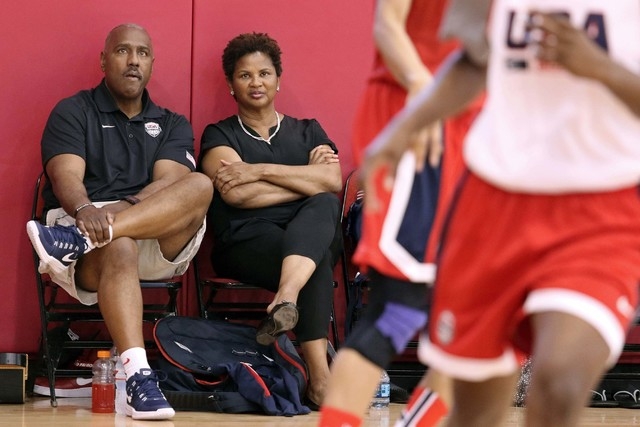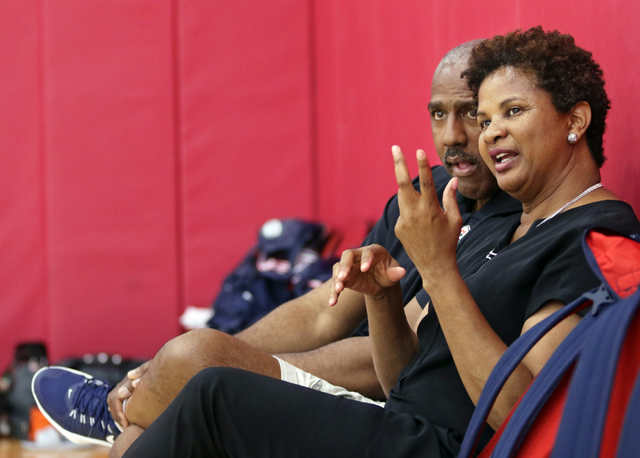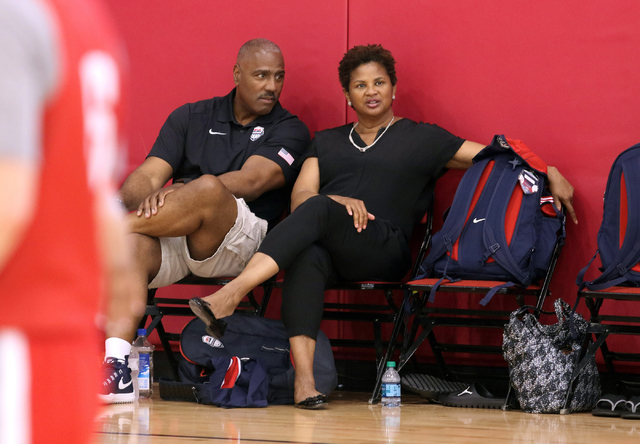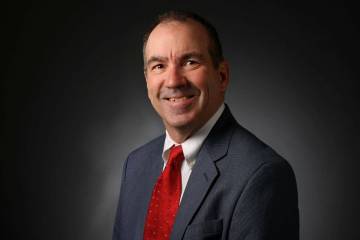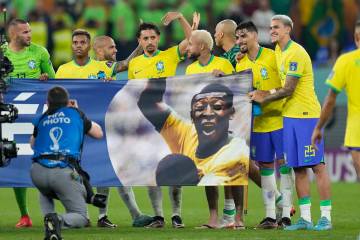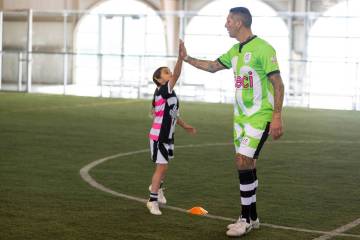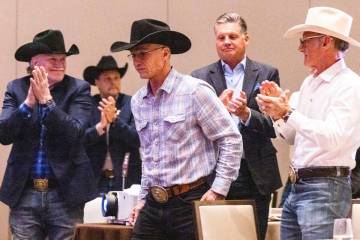Renee Brown still helping U.S. mine Olympic gold
Right after you were allowed in to watch the last half-hour of the U.S. women’s national basketball team minicamp workout at UNLV’s Mendenhall Center this week, you were handed a yellow sheet with the players’ names on it.
NO, NAME, POS, HGT, WGT, DOB, TEAM, COLLEGE, HOMETOWN.
It was surprising that weight was listed among the headings, because you never see weight listed in an NCAA women’s basketball souvenir game program. When I asked a Team USA official about it, she said these are world-class athletes, and they should be treated as such. Amen to that.
Under the team heading, 22 of the 24 names had WNBA franchises listed. Sparks, Mystics, Mercury, Storm, Shock, Sky, Stars, Fever, Lynx, Dream. This speaks of the WNBA’s long-term viability — who knew the WNBA would last this long? No other women’s pro sports league has. Not in this country.
It also speaks of the 1996 Team USA women’s basketball team that won the Olympic gold medal in Atlanta. Lisa Leslie, Dawn Staley, Sheryl Swoopes, Rebecca Lobo and that bunch.
That was the team that spawned the WNBA. So if Team USA loses to Brazil or Australia at the Georgia Dome, who knows how it turns out?
Maybe we’d know Bill Laimbeer only as a Detroit Pistons’ “Bad Boy” instead of coach of the three-time WNBA champion Detroit Shock, and then maybe Diana Taurasi never gets to kiss Seimone Augustus after they got into each other’s grills a couple of seasons ago.
That was awesome — way more awesome than when Magic Johnson and Isiah Thomas kissed before the 1988 NBA Finals.
After Geno Auriemma, the coach of world famous Connecticut and also Team USA, kept his players about 45 minutes longer than expected Monday — Geno takes even minicamp seriously — some of the world’s best women’s basketball players sidled over to where a woman in dark blue business attire was watching Geno do what Geno does.
This was Renee Brown of Henderson, who once upon a time — before Lisa Leslie, and before Michael Jordan, but not before Harold “Happy” Hairston — played high school basketball at Basic High in Henderson, and then for UNLV.
She said she wasn’t that good, though.
She went on to coach at a few colleges, but not UNLV, because athletic director Charlie Cavagnaro was not interested. But Tara VanDerveer hired her as an assistant at Stanford, which won the national championship, and that led to Brown serving on the committee that selects the players for the Olympics.
She must be doing a pretty good job.
Team USA has won the past five Olympic gold medals, and from 1994 until 2006, it did not lose a game in international competition. Sort of like the Globetrotters, although unlike the Washington Generals, you’ve got to guard the Brazilian women on the perimeter.
Her reputation for selecting players helped Brown land a job with the WNBA, where, as chief of basketball operations and player relations, she has been since the start.
The start was April 24, 1996. The WNBA has endured for 18 seasons, when a lot of people didn’t think it would endure for one. Like one of those women’s pro soccer leagues.
True, without the deep pockets of the NBA and its owners, who in the beginning operated all the teams, the WNBA might have dribbled its way into obscurity a long time ago. But six of the league’s 12 teams are now independently owned. And whereas all the teams used to bleed red ink, six of the 12 reported a profit after the 2013 season.
That’s progress, says Renee Brown, who got her coaching start at Cannon Junior High, and Clark, Chaparral and Bonanza high schools, and then a few years later was interviewing with David Stern for a job. That’s a vertical leap that Michael Jordan would have trouble making.
“My whole career was in coaching,” she said. “But when I decided to go and work with our Olympic team — and then the WNBA started and they called me, I felt this huge responsibility to help contribute to professional sports for women.
“We tipped in 1997. In September it’ll be 19 years. And I’ve been on five gold medal selection committees, and this will be my sixth one. Can you believe it?”
When you ask about the future of the WNBA, the first thing Brown mentions is the talent of the players.
“The basketball cannot be better,” she said. “We’ve got the best female basketball players in the world playing in our WNBA. And the talent gets better every year.
“I remember years ago when I would talk to young (female players) and they’d say, ‘I want to be like Mike; I want to be like Magic; I want to be like Larry.’ Now, it’s ‘I wanna be like Diana Taurasi; I wanna be like Lisa Leslie.’ Or Sue Bird, or Maya Moore, or Candace Parker — look at the talent. These players are great.”
She says the league “absolutely” is as strong as it has ever been.
Eventually, the WNBA will have to get around to dealing with Brittney Griner, one of its biggest stars, for getting into an off-court fight with her basketball-playing fiancee — domestic violence is a serious issue, no matter how you slice it.
But that it has become an issue shows how far the WNBA has come. It’s a legitimate league with legitimate problems, although not nearly as many problems as boxing.
Las Vegas Review-Journal sports columnist Ron Kantowski can be reached at rkantowski@reviewjournal.com or 702-383-0352. Follow him on Twitter: @ronkantowski




